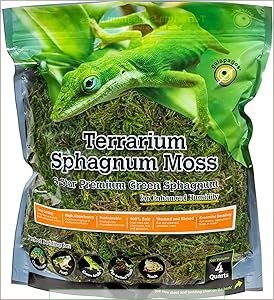This site is supported by our readers. We may earn a commission, at no cost to you, if you purchase through links.

They’re known for being defensive and can quickly shift from calm to confrontational if they feel threatened. You’ll need patience and a gentle approach.
Wild-caught specimens tend to be more aggressive, while captive-bred pythons are generally more manageable. They’re not inherently mean, just naturally cautious.
Their body language speaks volumes – watch for frozen stances, tail wagging, and half-extended tongues as warning signs. Proper husbandry, consistent handling, and understanding their unique temperament can help you build a trusting relationship with these fascinating serpents.
Table Of Contents
- Key Takeaways
- Blood Python Temperament Overview
- Recognizing Blood Python Body Language
- Proper Husbandry for Calm Blood Pythons
- Top 4 Essential Products for Blood Python Care
- Avoiding Aggressive Behavior in Blood Pythons
- Blood Python Handling Techniques
- Blood Python Behavior by Age
- Managing Stress and Anxiety in Blood Pythons
- Blood Python Temperament and Genetics
- Blood Python Care and Handling Best Practices
- Frequently Asked Questions (FAQs)
- What is the attitude of a blood python?
- How aggressive are blood pythons?
- How docile are blood pythons?
- What is the most aggressive python species?
- Are blood pythons temperamental?
- Why isn’t the Blood Python popular?
- Are blood pythons aggressive?
- What temperature do Blood pythons like?
- What does a Blood Python look like?
- What is a blood python?
- Conclusion
Key Takeaways
- You’ll find blood pythons aren’t naturally aggressive, but they’re defensive creatures that require gentle, consistent handling to build trust and reduce stress. Their temperament dramatically improves with patient, predictable interactions.
- Captive-bred blood pythons are significantly more docile than wild-caught specimens, making your choice of snake source crucial for establishing a calm, manageable pet. Genetics and early socialization play a massive role in their behavior.
- Your python’s environment directly impacts its temperament – maintaining stable temperatures (76-82°F), providing secure hiding spots, and minimizing sudden movements can transform a potentially defensive snake into a relaxed companion.
- Understanding their body language is key to successful blood python handling. Watch for warning signs like tail wagging, frozen stances, and rapid tongue flicking, which indicate stress or anxiety, and learn to respond with calm, deliberate movements.
Blood Python Temperament Overview
When you first encounter a blood python, you might be surprised by its defensive reputation.
Blood pythons aren’t villains—they’re survivors, misunderstood masters of self-preservation with hearts of serpentine gold.
Understanding their behavior is key to transforming these misunderstood snakes from seemingly aggressive creatures into calm, manageable companions.
Common Misconceptions
Myth busting time: Blood pythons aren’t the villains media portrays.
These misunderstood serpents have a reputation that doesn’t match reality.
Consider these snake temperament truths:
- Aggression is rarely their default mode
- Defensive mechanisms aren’t signs of hostility
- Docility emerges with proper understanding
Your perception matters.
By challenging snake stereotypes, you’ll discover blood pythons are more likely to retreat than attack, transforming fear into fascination about these remarkable reptiles.
Defensive Behavior
When misunderstood, blood pythons might seem scary, but they’re masters of self-preservation. Their defensive behavior is less about aggression and more about survival.
Here’s what you’ll witness when they feel threatened:
- Rapid musking to repel predators
- Sharp hissing warnings
- Quick defensive strikes
- Strategic body coiling
- Immediate retreat from perceived danger
They’re not out to get you—they’re just protecting themselves with an impressive arsenal of stress signals. This behavior is a clear indication that they are focused on survival.
Aggression Vs Anxiety
Ever wondered why your blood python seems "aggressive"?
What looks like a fierce attitude is often a fear response.
Your snake’s defensive posture isn’t about attacking—it’s about survival.
Those quick strikes, frozen stances, and rapid breathing are anxiety signals, not aggression.
By understanding stress triggers and recognizing calming techniques, you’ll transform your blood python’s temperament from seemingly hostile to wonderfully manageable.
Remember: knowledge is your best tool in handling blood python behavior.
Understanding the importance of a calm ball python’s natural environment needs can also help in managing stress and anxiety in your pet.
A blood python’s temperament is a delicate dance of trust—respect its rhythm, and harmony follows.
Recognizing Blood Python Body Language
Decode your blood python’s secret signals: Every flick, coil, and stance tells a story of survival and trust.
If you’re considering a blood python as a pet, understanding their body language is essential for safe and successful interaction.
Their warning signs like tail wagging, frozen stance, and rapid tongue flicking can help you interpret whether they’re feeling anxious, defensive, or potentially aggressive, which is crucial for a safe interaction with these animals, especially when noticing signs like rapid tongue flicking.
Warning Signs of Aggression
Decoding the warning signs of a stressed blood python means reading their body language like a secret code.
Watch for these telltale stress signals that scream "back off!":
- Rapid tongue flicks scanning the environment
- Intense, unblinking stare that could freeze you in place
- S-shaped neck posture ready to launch a defensive strike
These aren’t aggressive actions—they’re anxiety triggers.
Your snake isn’t looking to pick a fight; it’s signaling deep discomfort.
Hissing, musking, and coiling are classic defensive mechanisms when a blood python feels cornered and threatened, transforming from calm companion to protective survivor.
Frozen Stance and Tail Wagging
Interpreting a blood python’s frozen stance provides critical insights into its emotional state.
When your snake feels threatened, it exhibits telltale stress signals that demand your immediate attention:
- Becomes completely motionless, like a statue
- Wags tail side to side as a warning
- Flattens body to appear larger and more intimidating
- Tenses muscles, preparing for potential defense
These defensive posture cues reveal deep anxiety triggers within your blood python’s temperament. By understanding these fear responses, you’ll learn to respect your snake’s personal boundaries.
Backing off slowly and providing space becomes essential when observing these nervous behavior patterns. Remember, this isn’t aggression—it’s pure self-preservation instinct speaking volumes about your snake’s emotional landscape.
Wiggling Eye and Tongue Half Out
A nervous blood python might reveal its anxiety through peculiar eye and tongue signals. When you spot a wiggling eye and half-extended tongue, your snake is broadcasting a clear stress message.
| Signal | Meaning | Action | Impact |
|---|---|---|---|
| Wiggling Eye | High Anxiety | Give Space | Reduces Stress |
| Half Tongue | Defensive Mode | Minimize Interaction | Prevents Aggression |
| Rapid Flick | Warning Sign | Stay Calm | Builds Trust |
| Frozen Gaze | Threat Response | Slow Movements | Guarantees Safety |
These subtle blood python behavior patterns help you understand your snake’s emotional state and respond appropriately, which is crucial for building trust and ensuring safety.
Proper Husbandry for Calm Blood Pythons
You’ll transform your blood python’s temperament through thorough husbandry practices that prioritize its environmental comfort and psychological well-being.
Creating an ideal habitat with precise temperature control, appropriate humidity levels, and secure hiding spaces can dramatically reduce stress and cultivate a more docile, trusting reptilian companion, emphasizing the importance of environmental comfort.
Cool Temperatures and Humidity Levels
When reading your blood python’s mood, temperature control becomes your secret weapon. Create a thermal paradise with these three steps:
- Maintain a cool 75-78°F zone
- Craft a toasty 84-88°F basking spot
- Keep overall ambient temps at 80-82°F
By mastering humidity management and thermal gradients, you’ll transform your snake’s stress into serenity, ensuring a calm, comfortable companion.
Effective temperature regulation often relies on a reliable reptile tank heater to maintain ideal conditions.
Opaque Enclosures and Adequate Ventilation
Your blood python’s sanctuary starts with an opaque enclosure that blocks visual stressors.
Solid walls create a sense of security, while strategically placed ventilation ports facilitate fresh air circulation.
Think of it like a snake’s personal fortress – dark, protective, and perfectly balanced.
Proper enclosure design isn’t just about walls; it’s about creating a stress-free environment that keeps your python calm and healthy.
Effective snake housing ventilation is vital for maintaining high-quality air, as seen in proper ventilation systems, which is essential for a healthy and balanced ecosystem.
Day/Night Cycle and Dark Hiding Places
Your blood python craves a sense of security through natural rhythms. Create a stress-free environment by carefully managing its day/night cycle:
- Install opaque dark hiding places that mimic their natural habitat
- Maintain consistent lighting cycles to regulate blood python temperament
Proper enclosure design reduces anxiety, helping your snake feel safe and calm during handling. This approach supports the overall well-being of your blood python.
Top 4 Essential Products for Blood Python Care
You’ll need the right gear to keep your blood python happy and healthy, starting with a carefully selected set of essential products.
These four must-have items will help you create a secure, comfortable environment that supports your snake’s well-being and helps manage its naturally defensive temperament.
1. 10 Gallon Reptile Tank Glass Terrarium

When setting up your blood python’s first home, the 10-gallon glass terrarium offers a compact starter solution.
Think of it as your snake’s studio apartment—perfect for hatchlings but quickly outgrown. This transparent enclosure provides excellent visibility, letting you monitor your python’s behavior while offering basic reptile housing needs.
Ventilation systems guarantee air circulation, but humidity control requires careful attention. While ideal for young snakes, plan to upgrade as your python grows.
Your careful enclosure design now sets the stage for a calm, comfortable companion, preventing potential stress-induced temperament issues, and this is crucial for a healthy and happy pet, with proper reptile housing.
2. Large Reptile Terrarium 120 Gallon

Ready to level up your blood python’s living quarters? The REPTIZOO Large Reptile Terrarium opens up a whole new world of comfort for your scaly companion.
This 120-gallon powerhouse delivers everything your snake needs for a stress-free habitat:
- Tempered glass construction for durability
- Sliding doors for effortless access
- Raised bottom plate for heating elements
- Essential ventilation design
With spacious dimensions and thoughtful engineering, this terrarium transforms your snake’s environment.
The secure lids and sturdy build minimize potential escape routes, while strategic design elements support vital humidity control.
You’ll create a sanctuary that meets your blood python’s physical needs and also promotes a calm, relaxed temperament—turning potential tension into peaceful coexistence.
3. Zoo Med Digital Thermometer Humidity Gauge

When your terrarium’s environment feels like a rollercoaster, the Zoo Med Digital Thermometer Humidity Gauge becomes your Python’s peace-keeper. This precision instrument tracks temperature and humidity with expert accuracy, helping you dodge potential mood swings in your scaly companion.
Strategic probe placement reveals microclimates within the enclosure, ensuring no sneaky hot or cold spots catch your snake off guard.
Blood pythons turn defensive when temperatures climb above 88°F or humidity dips below 60% – a recipe for reptilian stress.
By monitoring these environmental metrics, you’ll transform your snake’s habitat from unpredictable to perfectly calibrated, keeping temperament cool and comfortable.
Knowledge is your best defense against unexpected snake behavior, and with the right tools, you can ensure your snake’s environment remains stable and healthy, making it easier to manage its temperament.
4. Natural Green Sphagnum Moss Terrarium

A jungle’s secret weapon becomes your python’s comfort zone: natural green sphagnum moss. This incredible substrate transforms your enclosure into a humidity-controlling sanctuary that directly impacts your snake’s well-being and temperament.
- Mimics natural marshy habitats
- Regulates moisture with exceptional precision
- Reduces stress during critical shedding phases
- Creates a soft, supportive environment
Moisture management isn’t just technical—it’s an art form for reptile enthusiasts. By strategically layering sphagnum moss, you’re crafting a microclimate that speaks directly to your blood python’s instincts.
Pre-cleaned and ready to use, this verdant substrate invites burrowing behaviors while maintaining ideal humidity levels. Your python will appreciate the thoughtful design, responding with decreased defensive postures and a more relaxed demeanor. When environment meets expertise, temperament follows suit, creating a humidity-controlling sanctuary that promotes well-being, and your python will thrive in its new natural habitat with exceptional care.
Avoiding Aggressive Behavior in Blood Pythons
If you’re keen to handle a blood python without getting bitten, you’ll need to understand their defensive nature and learn specific interaction techniques.
By approaching cautiously, minimizing threats, and building trust through consistent positive interactions, you’ll transform these misunderstood reptiles from seemingly aggressive creatures into calm, manageable companions, which is crucial for a safe and enjoyable experience with these animals, emphasizing the importance of building trust.
Approaching With Caution and Minimizing Threats
When sizing up a blood python, your approach can make or break the interaction.
Consider these defensive maneuvers:
- Sidestep the predator trigger by entering from the side, not overhead
- Channel your inner sloth – move with glacial patience
- Radiate zen-like calm – your python reads your energy like a book
Threat assessment isn’t just strategy; it’s survival.
Avoiding Sudden Movements and Restraint
Your python’s defensive radar is always on high alert. Sudden movements can trigger an instant stress response, transforming a calm snake into a bundle of defensive energy.
Master the art of gentle handling by understanding your blood python’s movement sensitivity. Move like a tai chi master – smooth, predictable, and controlled.
| Movement Type | Python’s Reaction | Handling Strategy |
|---|---|---|
| Quick Jerks | Defensive Strike | Slow, Deliberate Motion |
| Tight Grip | Musking/Biting | Loose, Supportive Hold |
| Overhead Approach | Freezing | Soft Side Movement |
| Unstable Handling | Retreat/Stress | Steady, Secure Support |
| Rapid Gestures | High Alert | Calm, Predictable Interaction |
To ensure a calm interaction, it’s essential to be aware of your python’s reactions to different handling strategies, using slow, deliberate motion and loose, supportive hold to minimize stress. By doing so, you can create a calm, predictable interaction and avoid triggering a defensive response.
Building Trust Through Consistent Positive Interactions
Trust-building with blood pythons is an art of patience and understanding.
Your gentle approach transforms a defensive snake into a confident companion through:
- Brief, consistent handling sessions respecting comfort zones
- Support techniques ensuring snake security
- Predictable feeding routines
- Calm responses during defensive displays
- Deliberate, slow movements signaling safety.
Remember, your blood python isn’t aggressive—it’s communicating its natural survival instincts through body language and behavior, which is a display of its natural behavior.
Blood Python Handling Techniques
When handling blood pythons, you’ll need to approach with caution and respect their unique temperament.
By mastering specific handling techniques that minimize stress and prioritize the snake’s comfort, you can transform these potentially defensive creatures into calm, manageable companions, which is crucial for a safe and enjoyable experience with blood pythons.
Using a Hook for Minimal Interaction
A reliable snake hook becomes your secret weapon for stress-free blood python handling sessions.
Master this essential tool with precision and care to minimize defensive reactions. Here’s your game plan for hook safety:
- Select a sturdy hook with a comfortable grip
- Approach the snake slowly from the side
- Move deliberately to prevent startling
- Support the snake’s body evenly
- Keep initial interactions brief and positive
Proper hook handling transforms your interactions, reducing anxiety and building confidence for both you and your blood python. Using the right snake hook tools is vital for safe handling practices.
Gradually Introducing Hand Contact
When diving into hand contact with your blood python, patience becomes your greatest ally.
Start by letting the snake explore your presence, moving slowly and deliberately to build snake trust. Your calm approach signals safety, helping your blood python acclimate to human interaction.
Gentle handling techniques involve minimal sudden movements and respecting the snake’s personal space. Let the snake sense your hand nearby, allowing natural curiosity to guide initial interactions.
Blood python temperament thrives on consistent, predictable contact. Remember, each gentle touch is a step toward forming a bond of mutual understanding and comfort.
Breathe, move softly, and let trust develop naturally.
Supporting The Snake’s Back Half
When handling these muscular constrictors, someone needs a strategy that guarantees their snake’s comfort and safety.
Proper snake support is critical for maintaining blood python temperament during interactions.
Your handling technique should create a sense of security through careful body alignment.
The key aspects of this technique include:
- Distribute weight evenly across both hands
- Keep palms soft and movements deliberate
- Support the entire back half without constricting
- Maintain a gentle, fluid motion that mimics their natural positioning
By mastering these gentle handling techniques, you’ll transform potentially stressful encounters into calm, positive experiences that reinforce trust and minimize defensive reactions in your blood python.
Blood Python Behavior by Age
You’ll discover that blood pythons transform dramatically throughout their life stages, with temperament shifting from nervous hatchlings to confident adults.
As you learn about their behavioral progression, you’ll understand how proper handling and genetics play pivotal roles in shaping their interactions with humans.
Hatchlings and Early Development
When you first bring home a blood python hatchling, you’re welcoming a tiny explorer into your world.
These 12-18 inch neonates aren’t born aggressive—they’re simply discovering unfamiliar territory.
Keep initial handling sessions short and sweet, focusing on building trust.
Use a compact shoebox-sized enclosure with simple paper substrate to create a secure environment.
Maintain humidity around 60-70%, watching for regular shedding as a marker of healthy juvenile development.
Your patient approach during these early months sets the foundation for a confident, calm snake companion.
Six Months to Yearlings and Increased Confidence
Around the six-month mark, your blood python enters a critical socialization phase where its true temperament emerges.
Here’s your roadmap to nurturing a confident companion:
- Upgrade to a spacious 48" x 24" x 12" enclosure
- Feed larger prey every 10-14 days
- Maintain cool 78-82°F temperatures
- Practice gentle, consistent handling sessions
Embrace this transformative period, helping your young python develop trust, reduce fear responses, and build a solid foundation for future interactions.
Adults and Established Behavior Patterns
As your blood python matures, its established behavior patterns become more predictable.
Adult snake behavior shifts from reactive to calm, revealing a more consistent temperament.
Defensive instincts don’t disappear but become more manageable through consistent socialization techniques.
Mature blood pythons develop nuanced behavioral traits that reflect their individual personalities.
Your snake’s true nature emerges, showing that patience and gentle handling can transform even the most nervous juvenile into a confident, relaxed companion.
Understanding the importance of genetic temperament factors can help owners better appreciate their pet’s unique characteristics and develop a deeper understanding of their behavior.
Managing Stress and Anxiety in Blood Pythons
If you’re a blood python owner, understanding and managing your snake’s stress is essential for building a trusting relationship.
By recognizing anxiety triggers and creating a calm environment, you’ll transform your potentially defensive snake into a more relaxed and predictable companion.
Identifying Stressors and Minimizing Threats
As your blood python grows more confident after those early developmental stages, you’ll want to master their stress signals.
Sudden household disruptions can trigger defensive behavior faster than a snake’s strike, think loud vacuums, unexpected visitors, or rapid movements near their enclosure.
Your python’s temperament hinges on creating a snake-safe environment that minimizes potential threats, by understanding and reducing environmental stressors, you’ll help your scaly companion feel secure and calm.
Transforming potential anxiety into a peaceful coexistence that respects their natural instincts.
Providing a Calm Environment and Reducing Stress
Your snake’s sanctuary starts with smart design and thoughtful care. Transforming a defensive python into a relaxed companion requires strategic environmental management.
- Create opaque enclosures with multiple secure hiding spots
- Maintain stable temperatures between 80-82°F
- Establish consistent feeding and cleaning routines
- Minimize sudden movements and loud noises
- Use gentle, predictable handling techniques
Snake relaxation isn’t magic—it’s science! A stress-free environment encourages calm blood python temperament by mimicking their natural habitat. Soft lighting, consistent temperature gradients, and carefully placed décor help reduce defensive behaviors.
By prioritizing environmental enrichment and gentle handling, you’ll help your python feel secure. Recognizing stress signs early is essential for maintaining a healthy and calm snake. Remember, a calm snake is a happy snake—and a companion who’s more likely to trust you.
Recognizing Signs of Anxiety and Taking Action
You’ve crafted a calm habitat, but now it’s time to decode your python’s stress signals.
Watch for these red flags:
- Rigid posture with shallow, rapid breaths
- Erratic tail movements when you approach
- Hyperactive tongue flicking accompanied by tight body coiling
These anxiety triggers demand immediate action.
Step back, reduce handling, and reassess your environment.
Your python’s peace depends on your keen observation and swift response.
Blood Python Temperament and Genetics
If you’re eyeing a blood python as a potential pet, understanding their genetic predispositions is essential to predicting their temperament.
Captive-bred pythons from reputable breeders offer a more predictable and docile companion, thanks to selective breeding that prioritizes calm traits and early socialization.
Captive-Bred Vs Wild-Caught Blood Pythons
Just managed your python’s stress? Let’s unpack the genetic backstory that shapes blood python temperament!
Wild-caught and captive-bred pythons are worlds apart in behavior. Captive-bred snakes raised around humans display dramatically different socialization patterns compared to their wild counterparts.
These carefully nurtured reptiles typically demonstrate remarkable docility, while wild-caught specimens often exhibit defensive reflexes honed by survival instincts.
Breeding methods dramatically influence snake temperament traits, with captive care producing more predictable and manageable companions. Genetic differences play a profound role in temperament inheritance, making your choice between wild-caught and captive-bred blood pythons a critical decision for a harmonious reptilian relationship, influenced by genetic backstory, captive care, wild-caught specimens, and survival instincts.
Reputable Breeders and Prioritizing Good Genetics
When wild-caught snakes pose challenges, selecting a top-tier breeder becomes your secret weapon in blood python ownership.
Smart breeders elevate your reptile experience through fastidious genetic selection.
- Verify breeding records
- Track lineage carefully
- Prioritize temperament testing
- Confirm ethical sourcing practices
Your strategic breeder research transforms potential anxiety into a confident, well-adjusted companion. By choosing wisely, you’ll bring home a captive-bred blood python primed for a harmonious relationship—setting the stage for a remarkable reptilian adventure.
The Impact of Genetics on Temperament
The family tree of a blood python speaks volumes about its personality.
Genetic influence plays a pivotal role in shaping your serpent’s temperament.
- Selective breeding programs carefully match docile snakes to produce calm offspring
- Inherited traits dramatically impact a python’s handling potential
- Genetic variation determines predisposition toward defensive behaviors
- Different morphs exhibit unique temperamental characteristics
- Breed selection prioritizes snakes with consistent, gentle dispositions
Understanding python genetics helps you choose a snake that’s more likely to be a relaxed companion.
Heredity factors aren’t just about vibrant colors—they’re about predicting how your scaly friend will react when you approach.
Reputable breeders invest years tracking temperament inheritance, ensuring each generation becomes more predictable and manageable.
Blood Python Care and Handling Best Practices
When handling blood pythons, you’ll need to understand their unique temperament and approach them with patience and respect.
By prioritizing their well-being, learning their body language, and creating a secure environment, you can transform these potentially defensive snakes into calm, manageable companions.
Prioritizing The Snake’s Well-being and Safety
A snake’s sanctuary begins with thoughtful care and understanding.
Creating a stress-free environment requires more than just basic maintenance—it’s about respecting their unique needs.
| Care Aspect | Key Considerations |
|---|---|
| Temperature | 76-82°F range |
| Handling | Gentle, supportive approach |
| Hiding Spots | Multiple secure locations |
| Enrichment | Regular, calm interactions |
Your blood python thrives when you prioritize its well-being through consistent, humane care.
Support their body, minimize threats, and watch as trust blossoms between you and your remarkable reptilian companion, fostering a stress-free environment and a strong bond based on gentle interactions.
Educating Yourself on Proper Blood Python Care
Ready to become a blood python pro? Your journey starts with smart learning strategies:
- Connect with Experts: Shadow experienced keepers and absorb their wisdom like a sponge.
- Knowledge Arsenal: Devour reptile forums, detailed care guides, and breeder insights.
- Consistent Care: Track your python’s behavior, habitat conditions, and nutrition religiously.
Proper reptile tank maintenance systems are essential for a healthy environment.
Mastering blood python care isn’t just science—it’s an art of understanding your scaly companion.
Respecting The Snake’s Natural Instincts and Boundaries
When you’ve mastered blood python husbandry, respecting their boundaries becomes your next challenge.
Imagine each interaction as a delicate dance of trust and understanding. Your goal? Create a safe, stress-free environment that honors their natural defensive instincts.
| Snake Behavior | Handler’s Response | Trust Outcome |
|---|---|---|
| Defensive coil | Pause, retreat | Safety increases |
| Tongue flicking | Stay calm, observe | Curiosity builds |
| Relaxed posture | Gentle support | Bond deepens |
Frequently Asked Questions (FAQs)
What is the attitude of a blood python?
When you least expect it, a blood python might surprise you—they’re not the monsters you’d imagine.
Captive-bred individuals are surprisingly docile, preferring calm interactions when handled gently and consistently from a young age, which makes them surprisingly pleasant to interact with.
How aggressive are blood pythons?
You’ll find blood pythons aren’t naturally aggressive, but they can be defensive.
Wild-caught specimens tend to be nippy, while captive-bred ones are generally docile.
Proper handling and socialization transform these powerful constrictors into calm, manageable pets.
How docile are blood pythons?
You’ll appreciate how docile captive-bred blood pythons can be when handled consistently.
Their temperament transforms from defensive to calm with gentle, patient interactions, making them surprisingly manageable for experienced reptile enthusiasts, as their nature becomes more docile.
What is the most aggressive python species?
Studies show the reticulated python tops aggression charts.
You’ll want to steer clear of these giants, as they’re known for their unpredictable temperament and potential for territorial behavior when feeling threatened or cornered.
Are blood pythons temperamental?
You’ll find blood pythons aren’t inherently temperamental.
Captive-bred specimens are typically docile when handled consistently, but they can be defensive if stressed or improperly approached.
Understanding their body language helps create a calm, positive interaction.
Why isn’t the Blood Python popular?
You might think blood pythons are unpopular due to their fierce reputation, but it’s their specific care requirements, defensive nature, and challenging temperament that deter most snake enthusiasts from choosing them as pets.
They are deterred because of these factors, which include the specific care requirements.
Are blood pythons aggressive?
Blood pythons aren’t inherently aggressive, but they’re defensive when stressed.
Captive-bred specimens are typically docile, while wild-caught ones can be nippy.
Proper handling, socialization, and understanding their body language help you develop a calm relationship.
What temperature do Blood pythons like?
You’ll want to keep your blood python’s habitat between 76-82°F, mimicking their tropical origins.
Cooler temps help them feel secure, so use heating pads and ceramic heat emitters to maintain this comfortable range precisely.
What does a Blood Python look like?
Like a living ruby, you’ll find blood pythons thick-bodied with deep crimson to rusty-red coloration.
They’re muscular snakes sporting heavy builds, wide heads, and compact frames that showcase their powerful, striking southeastern Asian appearance, with muscular builds being a key characteristic.
What is a blood python?
You’ll encounter a vibrant, muscular snake native to Southeast Asia, known for its striking red coloration.
Blood pythons are non-venomous constrictors that rely on powerful muscles to hunt and defend themselves in their natural habitat, which makes them a notable species due to their striking appearance.
Conclusion
Ultimately, knowledge is power when dealing with blood python temperament.
You’ll find success by understanding their unique behaviors, respecting their boundaries, and approaching with calm confidence.
Whether you’re a seasoned reptile enthusiast or a curious beginner, mastering the art of blood python care requires patience, consistent handling, and a deep appreciation for these complex creatures.
Remember, a well-cared-for blood python can transform from a defensive snake to a fascinating companion.
- https://www.reptilecymru.co.uk/short-tailed-pythons-and-blood-python-care-sheet/
- https://www.azreptiles.com/blood-python/
- https://reptilesmagazine.com/blood-python-care-and-husbandry/?srsltid=AfmBOor6TQJ4YrnyTDddl6kJ7hZ0lQ3j_5aM6yljffO5BgZndoGAytZj
- https://reptifiles.com/truth-blood-python-temperament/
- https://www.reptiletalk.net/taming-blood-python/



















